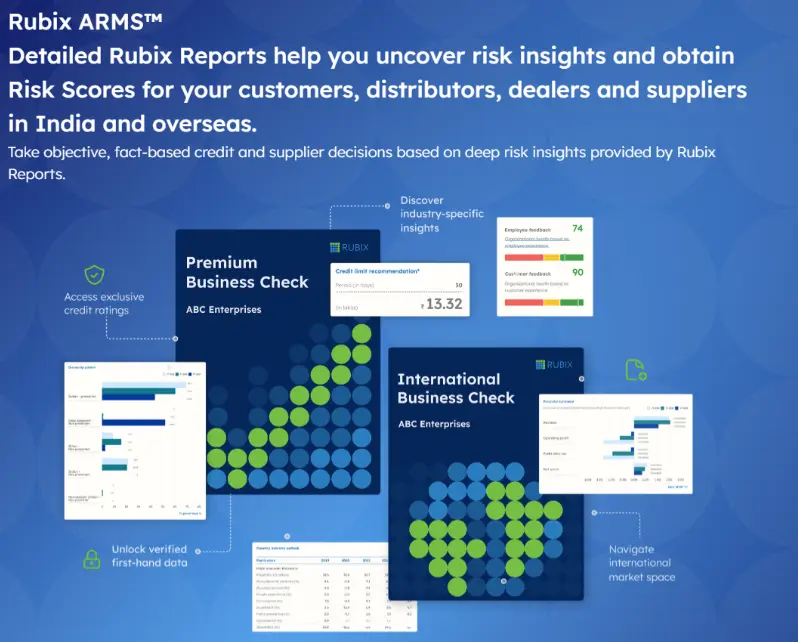Tech and Trends
The New Pulse of B2B Trade Credit: Platforms, Players and Paradigms

B2B trade credit is going through a transformation that is steady, deep, and quietly revolutionary. Traditionally seen as a static function between businesses, trade credit today is reshaping into a dynamic ecosystem, powered by technology, evolving regulations, and a new generation of players stepping into roles previously reserved for banks and financial institutions.
Recently, we spoke with André Casterman, board member of ITFA and Chair of the FinTech Committee. With over 24 years at SWIFT and a history of leading innovation in trade finance, André is widely recognized as a thought leader who bridges the old guard of banking with the future of digital finance. His insights reveal how the very foundations of trade credit are being redefined.
From Paper to Platform: A Changing Definition of Credit
André elaborated on B2B trade credit today being more than a matter of delaying payments—it’s about putting liquidity into motion where it is most required by financing trade receivables and payables in real-time along with transaction visibility and trust.
Previously “passive” accounting line items such as receivables are now invaluable short-term assets that businesses can leverage as collateral. This evolution in credit is helping businesses get working capital more quickly, particularly across borders where cash flow cycles can be longer. Expired account instruments such as letters of credit are being replaced by open account models due to the available digital tools for verifying, tracking, and financing trade.
The Rise of New Players in Trade Finance
Though banks and financial institutions remain a critically important component of the economy, their continual shift towards more profitable clients has created a gap in the market, particularly for small and medium enterprises (SMEs). André points out that many banks have become more discerning clients because of high compliance and risk management costs. This has allowed space for new types of lenders to emerge.
These include B2B e-commerce and logistics companies, fintech and even asset management firms. The common denominator among these players is having access to up-to-date trade information and a willingness to look at the non-preferred clients’ portfolio that traditional banks often ignore. Such new entrants have greatly enhanced the availability of credit and provided more choices for businesses that had limited options in the past.
Embedded Finance: Credit Where It’s Needed Most
Integration of credit services in shopping platforms is perhaps the single most impactful evolution in ecosystem features. The speaker highlights how e-commerce platforms and logistics providers are embedding finance into their offerings even deeper than before. Since they already manage trade flows (order tracking, custom clearance, delivery verification), they can evaluate and assess the risk to provide credit instantaneously.
DP World and some of the specialized logistic players in Europe are joining with lenders to provide financing as part of logistics service bundles. Credit no longer comes as an afterthought. It is integrated into workflow processes within commerce. It helps both sides, sellers and buyers, while boosting liquidity within the supply chain.
Why SMEs Stand to Gain the Most
Lenders focused on small to medium enterprises are taking innovation a step further by using accounts receivable and accounts payable first system. As André explained, evaluating risk at the transaction level is critical. Evaluation of actual trade flows, who is buying, who is paying, and how surely, allows underwriting of credit using nuanced techniques more sophisticated than traditional models.
This goal is achieved by modernizing and digitizing tools such as supply chain finance, promissory notes, and bills of exchange. This change is supporting the emergence of alternative funding models which allow stretching liquidity in real time, rather than just based on balance sheet figures. Platforms like Vayana are helping democratize this access by making it easier for suppliers to get paid early while enabling buyers greater flexibility in cash flow management.
Institutional Capital is Joining In
Another important trend is the growing interest from institutional investors. For years, trade finance was seen as too low yield to attract significant capital market attention. But today, high-yield transaction originators, especially those working with SMEs, are creating portfolios that appeal to asset managers.
The key is risk-reward calibration. André pointed out that investors looking for higher returns are increasingly open to backing SME-linked trade transactions, provided they come with robust data and transparent underwriting. This has started to change the liquidity equation for underserved markets.
The Future is Digital, Transparent, and Inclusive
Looking ahead, credit underwriting itself is changing. The focus is shifting from financial statements to real-time transaction data: how businesses trade, pay, and fulfill obligations. This internal transaction data, along with external sources like electronic invoicing systems, tax registries, and distributed ledgers, provides a more holistic view of creditworthiness.
Public-private partnerships are key to this future. Legal frameworks like the Model Law on Electronic Transferable Records (MLETR) enable the digitization of critical trade documents such as bills of lading and promissory notes. Countries around the world, including India, are beginning to adopt these standards, making trade finance more secure, more traceable, and more accessible.
Trade credit is no longer a behind-the-scenes function. It is becoming central to how businesses grow, manage risk, and seize new opportunities. With platforms, data, and non-bank lenders leading the charge, B2B trade credit is being reimagined for the digital economy. For SMEs in particular, this transformation offers hope, flexibility, and the capital they need to thrive.







